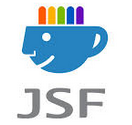JavaServer Faces (JSF) is a server side component framework for building Java Technology web-based application. JavaServer Faces (JSF) consists of two main parts: The JavaServer Faces API for representing components, managing their states, handling events, handling server side validations, and achieving data conversion; defining pages navigation, supporting internationalization and accessibility and providing extensibility for all these …
Maven
How To Build Spring MVC Web Application With Maven?
In my previous tutorial I have explained about how to create a web application using the Maven tool. This tutorial explains how to build your web application project using the Maven artifacts. What is artifacts?. Every framework developer have the repository to store their packages where maven would download from the given artifact id. This …
Create Web Application Project With Maven
This is a simple tutorial explaining how to set up your Web Application Project With Maven and then how it can be converted to the eclipse project. If you have earlier used ANT tool for building the Java projects, it is little difficult to understand the working method for the Maven at first. Maven is …
How to write a Custom Plugin for Maven?
In this article, we will learn about Maven which is a project management framework that provides a configurable approach for managing software projects. Maven covers all the necessary phases that happen right from project creation, building, documentation, reporting, installation and deployment. This article begins with the basics of Maven along with the concepts like Project …



